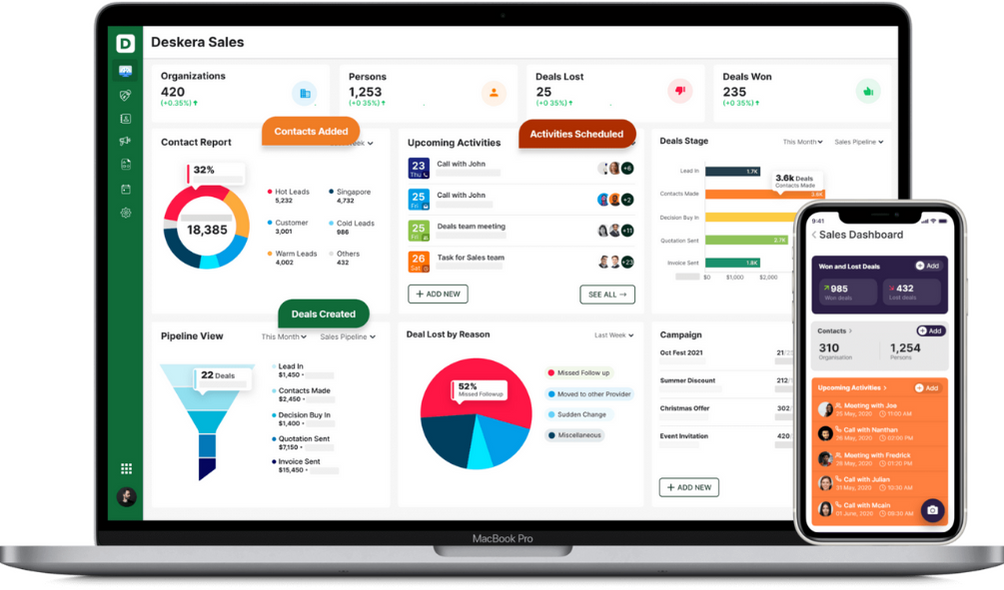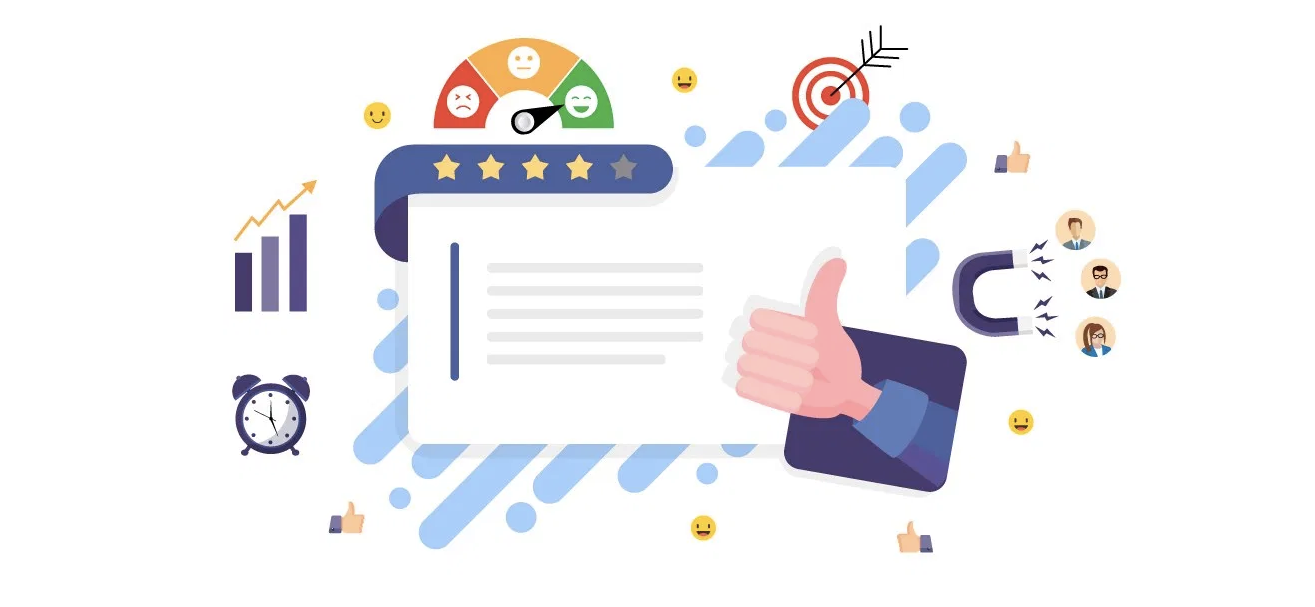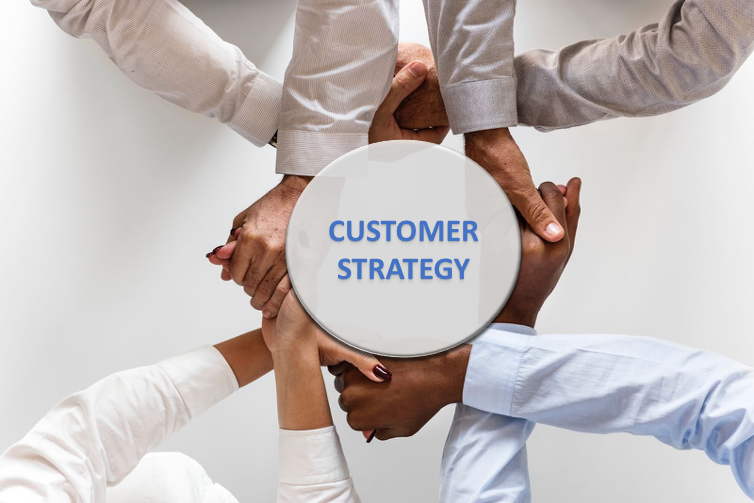Looking to enhance customer retention, witness an expedited and catapulted growth? Focus on this crucial factor called Customer Lifetime Value.
Why?
CLTV or the customer lifetime value is one one the most important growth metrics to consider, especially when the companies are wanting to measure the amount of time it will take to retrieve the investment to obtain a new customer.
If you are a business owner and are looking for ways to improve your customer acquisition and customer retention, then this post will surely help you.

Here is what the article brings to you:
- What is Customer Lifetime Value?
- Why is Customer Lifetime Value Important?
- How to Calculate Customer Lifetime Value?
- Customer Lifetime Value Formulas
- Customer Lifetime Value Examples
- How to Improve Customer Lifetime Value
- Advantages of Customer Lifetime Value
What is Customer Lifetime Value?
Customer Lifetime Value, also known as CLV or CLTV, is the metric that lets businesses know about the total revenue they can generate from a customer’s account throughout their business relationship.
CLV takes into account two factors: the customer’s revenue value and the customer’s assumed lifespan; further, it then compares the two elements. CLV is an essential metric for businesses as they can identify and zero in on the segments of customers which can be the most beneficial to them. By targeting the preferred group or segment, the businesses can derive better profits as this segment is more likely to purchase from them and for a longer span.
CLV is also a crucial factor for the customer support teams as they can use it to resolve customer issues, offer suggestions, and generate better results.
There are multiple components of CLV which businesses need to closely assess. Only when they have a clear and deep understanding of the CLV, will they be able to try out various strategies to know which one turns out the best one.
Why is Customer Lifetime Value Important?
There are some critical reasons for the businesses needing to monitor their CLV. Let’s look at them here:
Improve forecasting
CLV helps the companies to get a farsighted vision of the things to come and arrive at forecasts. These could be around the areas including production, staffing, inventory, and many more. This will prevent them from overspending ignorantly and unknowingly committing grave business mistakes.
Helps Overall Improvement
CLV also helps to know various other parts which can affect the pricing, sales, advertising, and ultimately customer retention. Knowing about these can certainly aid in building better strategies to cover the loopholes observed in diverse business processes.
Drives Better Decisions
CLV helps you spot the customers that could drive better income for them. This way you can plan your expenses on customer acquisition or the CAC- your customer acquisition cost. The outcomes could be surprisingly favorable in terms of profitability.
How to Calculate Customer Lifetime Value?
If your business is equipped with an ERP system, then you would not need to learn about this part; however, if you want to learn how the CLV is calculated manually, then you can follow the steps given here:
- Figure out your average order value: Determine your average sale value. you might look at one or three months as a proxy for the entire year
- Find the average number of transactions per period: CLV is largely dependent on the frequency of visits. So, note down the number of times the customers made transactions
- Identify Customer Retention: Assess the number of loyal customers you have and how long do they come back on average
- Calculate Customer Lifetime Value: Once you have all the above values, apply the formula given below:
Customer Lifetime Value Formulas
Let’s learn about the different customer lifetime value formulas:
Average Purchase Value
Divide your company's total revenue over a period, which is typically a year, by the number of purchases during that time period to calculate the Average Purchase Value.
Average Purchase Frequency Rate
The number of purchases divided by the number of customers will get you the average frequency rate.
Customer Value
Average purchase value multiplied by average purchase frequency rate gives you the Customer value.
Average Customer Lifespan
The Sum of Customer lifespans divided by the number of customers helps us calculate the average customer lifespan.
Customer Lifetime Value- CLTV
CLTV or the customer lifetime value is calculated by multiplying the customer value by average customer lifespan.
Customer Lifetime Value Examples
Let’s clear our concepts furthermore with these examples from different scenarios:
Restaurant
The total revenue a customer will generate for a business over the course of their relationship is the customer lifetime value.
For example, we will assume a typical restaurant that a customer visits once per month and spends $20 per visit over an average lifetime of 10 years.
Then, the customer lifetime value would be calculated as:
$20 x 12 x 10 = $2400
Car dealership
A car dealership business exhibits a low purchase volume but a high average sale amount. For this particular example, we will be making certain assumptions:
- The customer buys a new car every 5 years
- The value of the car is $30,000
- The customer purchases the car from the same company and is loyal to the brand
- The customer keeps coming back to purchase for the next 20 years
Mobile Application Signup
Here, we say that a startup’s application can be signed up for various plans based on customers’ requirements and affordability. With an average customer spending $15 per month and customers signing up for a span of 3 years, they also opt for making automatic monthly payments. Here is how we calculate the CLV:
How to Improve Customer Lifetime Value
Organizations persistently strive to make their CLV rise. This section brings to you some of the innovative strategies you can adopt to bring out more from your financial relationship with a customer.
Customer Experience
The front desk or the reception, or any other channels of communication contribute to the customer experience. So, ensure that all these touchpoints welcome and make your customers feel prioritized. This will certainly lead to better customer engagement.
Customer Loyalty or Reward points
This is a way to motivate your customers and keep them engaged with your brand. Apart from encouraging your customers to return, this also elevates the purchase frequency and the number of times the customer returns to buy from you.
Customer Engagement
Your advertising, sales processes, and strategies combined with customer support are ways in which you can boost your customer engagement. Companies that keep a close watch on these components of sales can conveniently identify what can be covered to improve customer engagement.
Enhance Customer Onboarding
When a customer decides to land at your store or signup online with your brand, they need to receive clear instructions about what is to be done next. While at the store, make sure that you have enough staff deployed to help them out at each step, and in case of online shopping, guide your customers in simple and easy ways and clear CTAs so that they don’t have to wander around. This shall help the growth of your business.
Improved Customer Service
Customer service plays a very crucial role in driving sales and maintaining a healthy CLV. Bad customer service will help your competitors really well, so it is wise to put in place a customer service that genuinely helps out customers looking for help or any kind of assistance.
Customer Feedback
Customer feedback can be said to be directly related to the customer experience. Your customer may have feedback or an unresolved issue that they may be trying to get resolved. Pave ways for your customers to reach out to you and explain their issues. Also, ensure that the issues get resolved at the earliest. Collecting customer feedback is essentially important to fill the gaps that you may have overlooked or missed out on.
Customer Relationship Management
Companies must always analyze and retrospect how their relationship with their customers has grown or developed over time. Looking at the historical data across sales and marketing can give them great insight into how they have been fairing in this department. ERP and CRM systems are outstanding ways to understand the customer lifecycle.
Invest in Technology
Technology facilitates you with automation which in turn, cuts down on a lot of mundane tasks for you. You can implement some basic tools that take care of your emails and spreadsheets; however, purchasing a package like Deskera CRM that empowers you to take care of a host of business operations will undeniably make your business move forward. It is a commercial software suite that includes advanced analytics. It can perform a variety of value computations, eliminating the need to manually assemble measurements using a spreadsheet.
Social Media
Your best chance to captivate your customers is to connect with them in places they frequent regularly. Platforms such as Facebook, Instagram, Twitter provide you with an excellent platform to connect with your customers.
Adopt Upselling and Cross-selling
Upselling and reengaging existing customers are often easier than attracting new ones. The purpose of upselling and cross-selling is to persuade customers to buy more premium products all in one go instead of a cheaper alternative.
Easy Purchasing Process
Out of the many important metrics, the Cart abandonment rate is a metric that helps businesses analyze the number of customers that drop out of the checkout process without making a purchase. There could be many factors such as too many options, too complicated packaging, or a complicated and lengthy checkout process. This factor necessitates the implementation of a user-friendly and simple purchasing process.
Use Targeted Content
Customers want to know what to know about your brand and the best way to put forward your word is by creating excellent content. Build your content to instill trust and loyalty, along with letting them know what more you have to offer. Articles, blog posts, e-books, podcasts are some of the ways you can reach out to the selected segment of customers.
Making Returns Simpler
There are times when a customer may not like the product they purchased and now, would like to return it. So, when they come back to return it, online or in person, make it simple and easy for them to have their way. The returns procedure has the potential to make or break your association with the customers based on the kind of experience they had.
Advantages of Customer Lifetime Value
The advantages of CLV are presented as follows:
Drives Repeat Sales
Most successful businesses have a good amount of loyal customers that keep coming back and buying from them. Using CLV to increase your repeat sales is a smart move you can make to further the growth of your business.
Enhances Customer Retention
When you address your CLV and keep a close watch on it, you are simultaneously working to enhance your customer retention. A precise segmentation and following the key metrics can boost your retention manifolds.
Augment Profitability
When you have all the key elements of your CLV in place, your profits are bound to take great shape. So keep a tab on all the ingredients of the CLV and you can soon be expecting a wonderful phase of customer loyalty and better prospects of growth for your business.
How can Deskera Help You?
Now, comprehensively manage all your customers and strengthen contact management. With Deskera CRM, import all your contacts with their details in one single click. Sending emails, scheduling meetings, creating deals, and tracking team performance are accomplished with this software.

Learn about the exceptional and all-in-one software here:
Key Takeaways
After having a long look at the concept of Customer Lifetime Value, here are some of the important observations:
- The average customer's income generated over the course of their engagement with a company is measured by customer lifetime value (CLV)
- Businesses have a variety of marketing tactics at their disposal to assist them to increase CLV over time
- Looking at CLV by customer segment might provide you with a better understanding of what's effective and what isn't for your company
- CLV vs. customer acquisition cost is a quick way to estimate a customer's profitability and the organization's ultimate growth potential
- CLV is important as it helps improve forecasting, helps in overall development, and drives better decisions
- Improving customer experience, customer engagements, customer support are some of the ways in which the businesses can boost their CLV
- Using social media platforms, adopting upselling and cross selling are also some of the key ways in which businesses can improve their CLV
Related Articles













